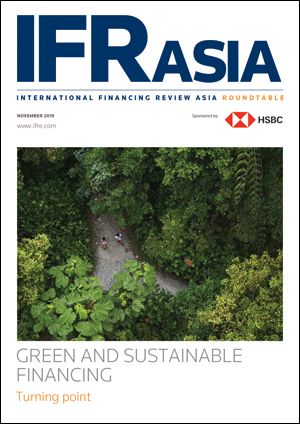Green finance may have initially been treated as a niche product or a marketing gimmick, but it is becoming harder to ignore.
In Asia, the market for environmental, social and governance investment seems to be at a turning point. Blue-chip companies like Olam International and Frasers Property report overwhelming demand when they seek to borrow in green or sustainable format, but many issuers and investors have yet to begin their journey.
Companies around the world must pay closer attention to their environmental footprints, especially when they are part of a global supply chain. Those that produce thorough reporting on their environmental impact will find it easier to access the market for ESG financing, while those that lack the discipline to do so will raise alarm bells with investors, who might reasonably question what else these companies are leaving out of their disclosures.
On the buyside, Asia still has some way to go before it catches up with Europe’s ESG-focused investor base, which is putting greater pressure on companies to reform their ways, but there are signs that more asset managers in this region are asking questions about sustainability. They might not buy into the latest green bond offering, but the perception of a company’s “green-ness” could be important later when trying to decide whether to invest in its equity.
Many of Asia’s lending banks still look at assets only in terms of financial returns, but the leading institutions are now trying to raise environmental standards in their own business. All the same, banks are calling for regulatory incentives, like capital relief on green loans, to encourage others to make that shift and allow them to reward responsible borrowers with lower interest rates.
International Finance Corp is taking on the challenge of financing many of the large projects in Asia that will mitigate climate change, but, with trillions of dollars of financing needed, capital markets will need to bear some of the load.
The most important push for asset managers and financial institutions might come from the end consumer. The younger generation of private wealth clients are thinking about the environmental impact of their investments and asking how green their money managers’ portfolios are – even the funds that are not specifically focused on green assets. Millennials also want to be sure that they are banking with an institution that has a positive impact on the world, rather than bankrolling environmental destruction.
Sustainable financing is heading for a crucial moment. Issuers, investors and banks will need to make sure they have convincing answers to tough questions or risk being left behind in the new age.
To see the digital version of this roundtable, please click here
To purchase printed copies or a PDF of this report, please email gloria.balbastro@refinitiv.com

